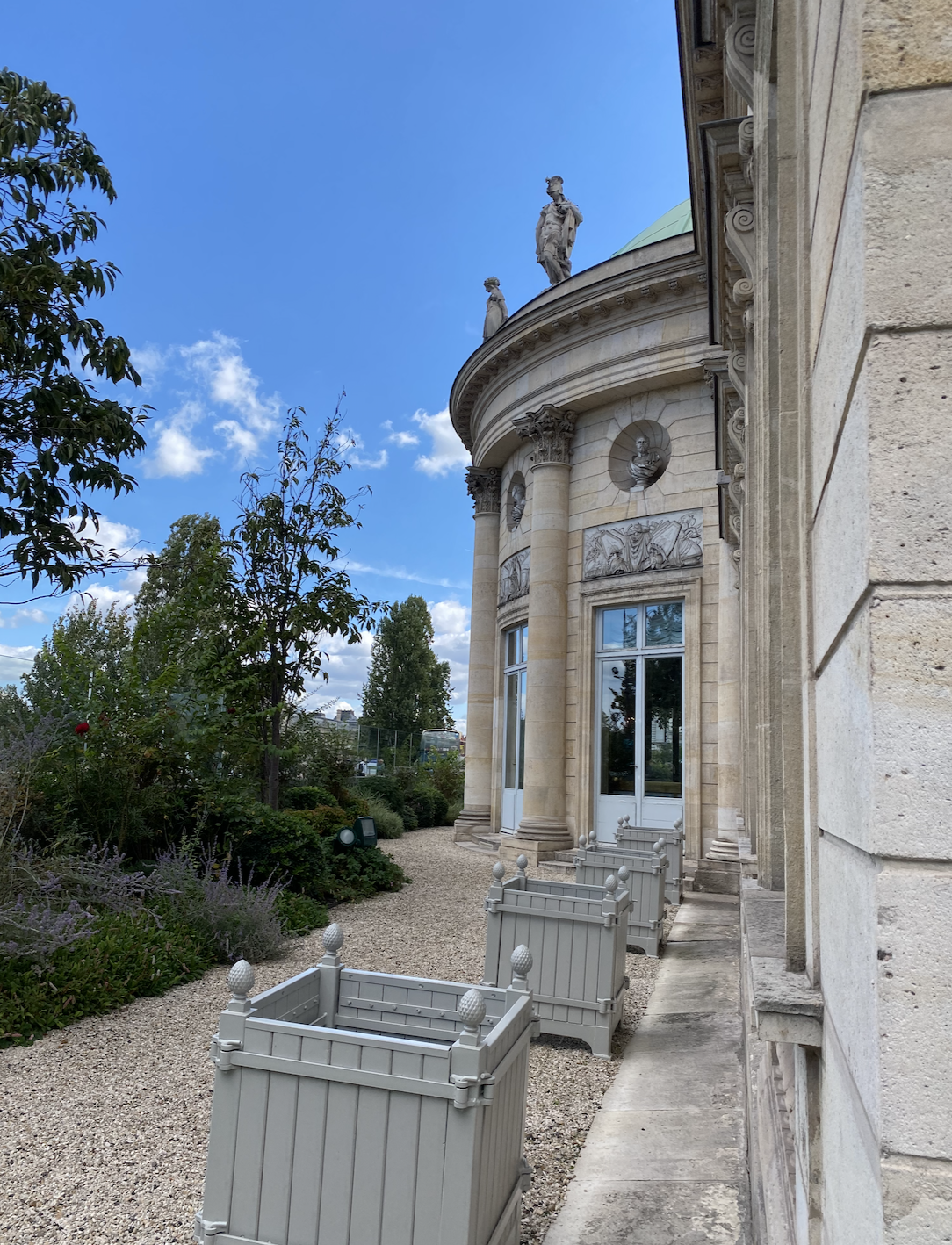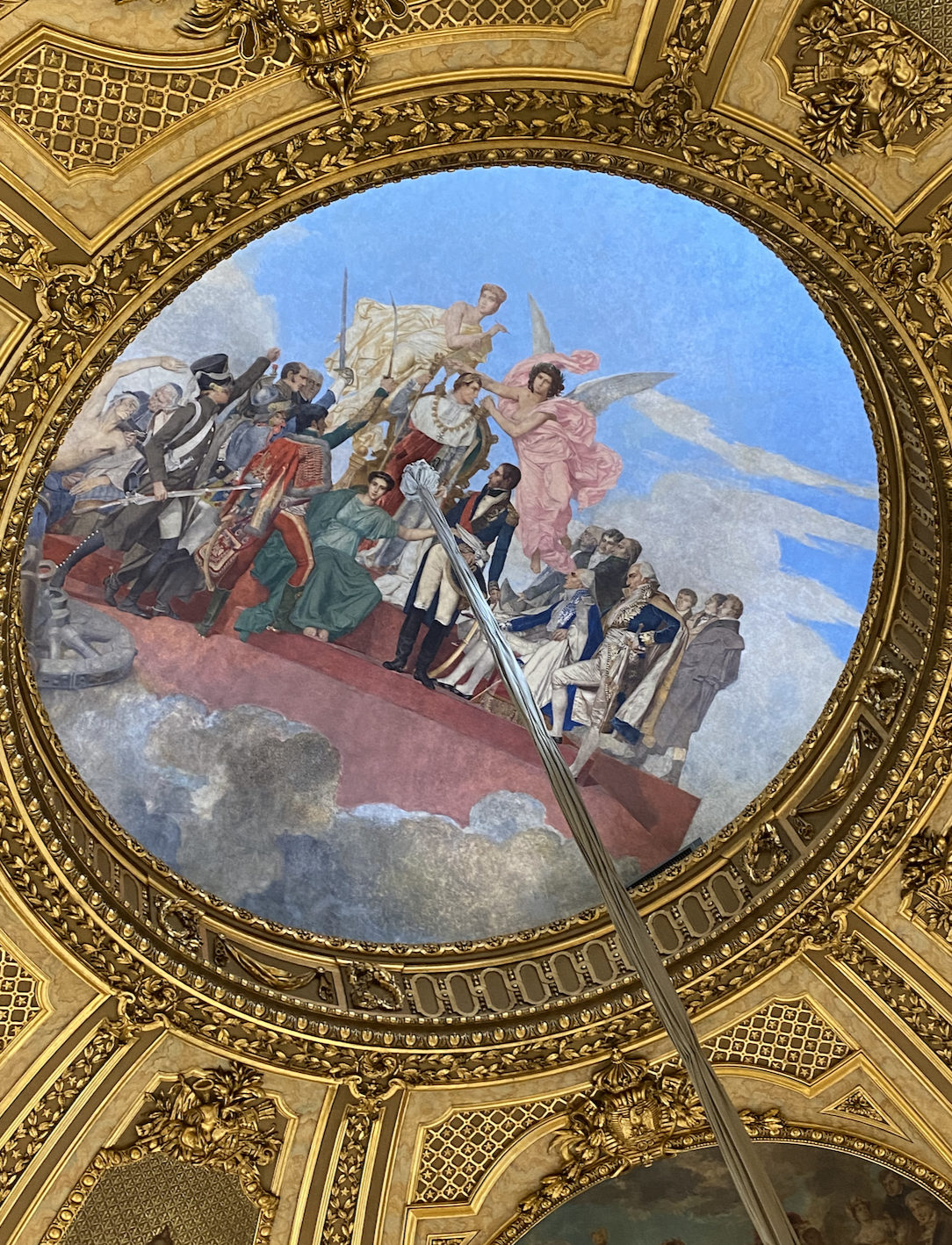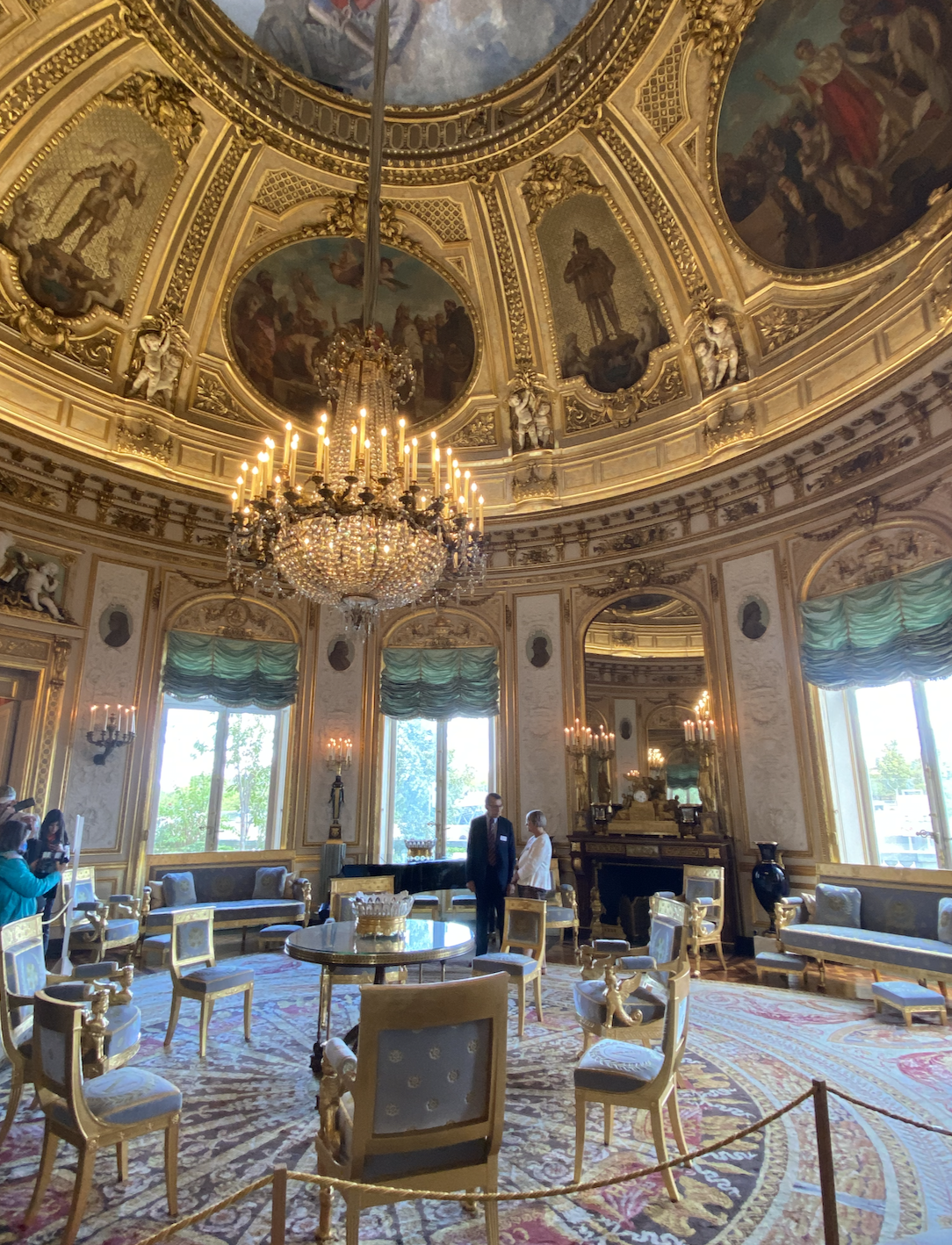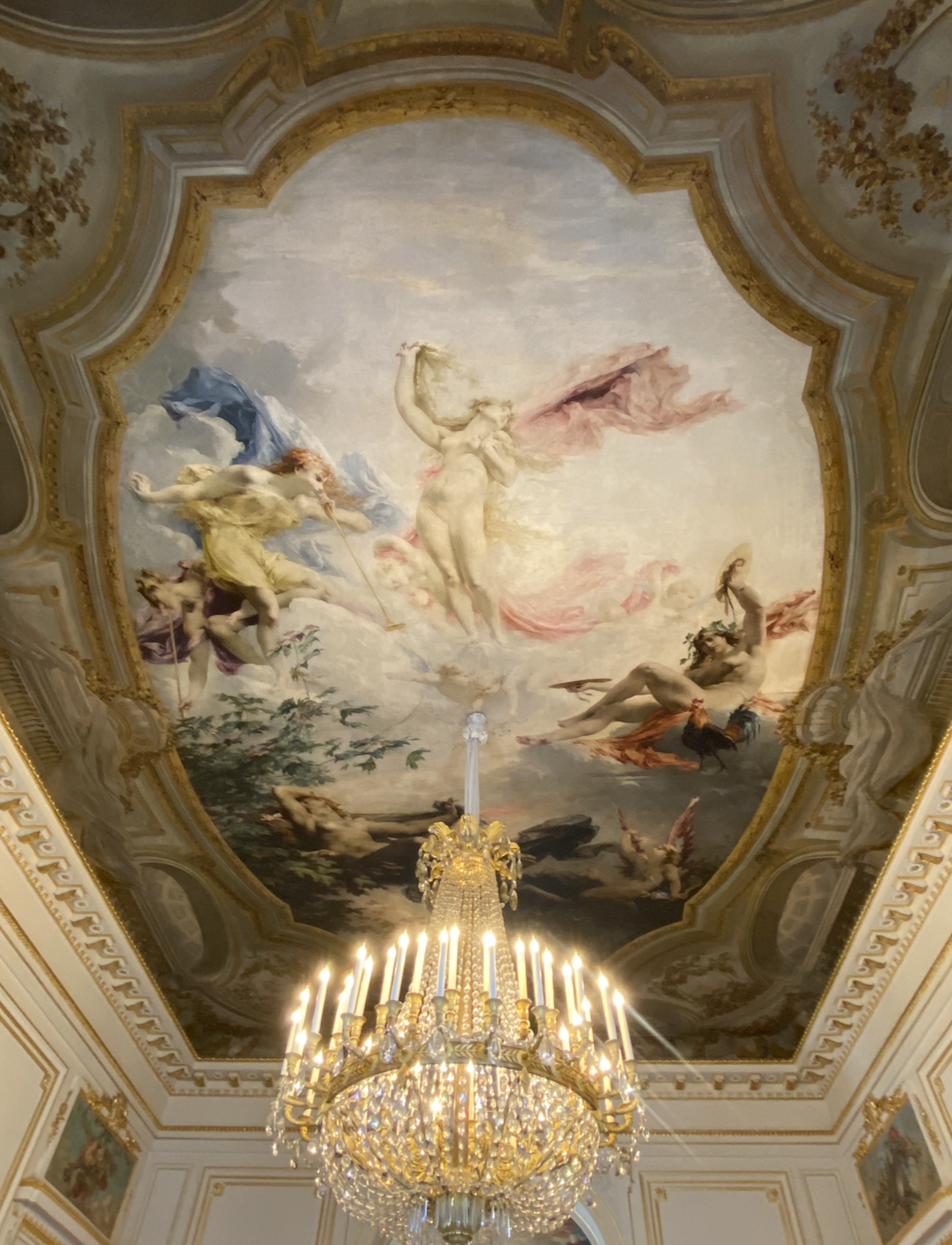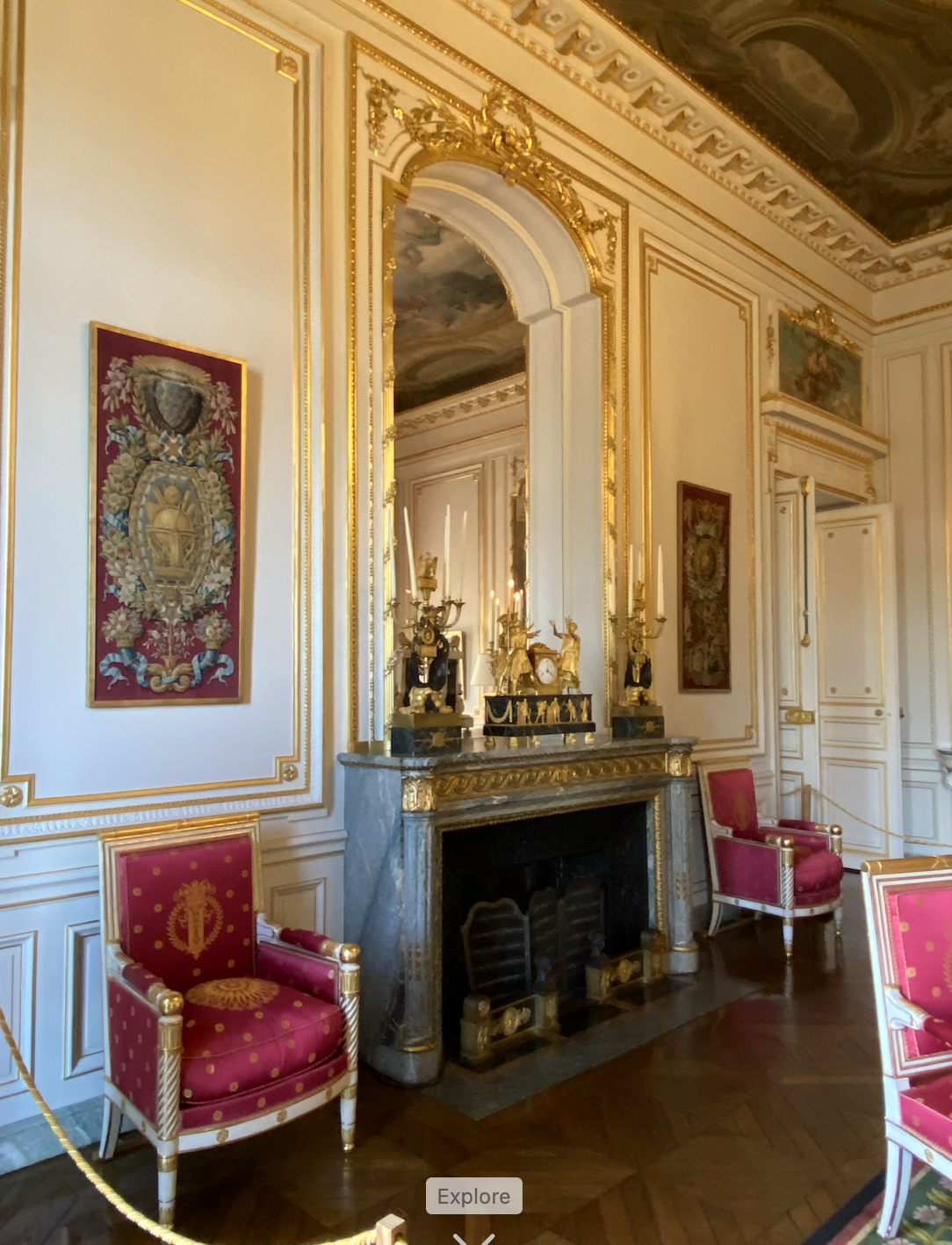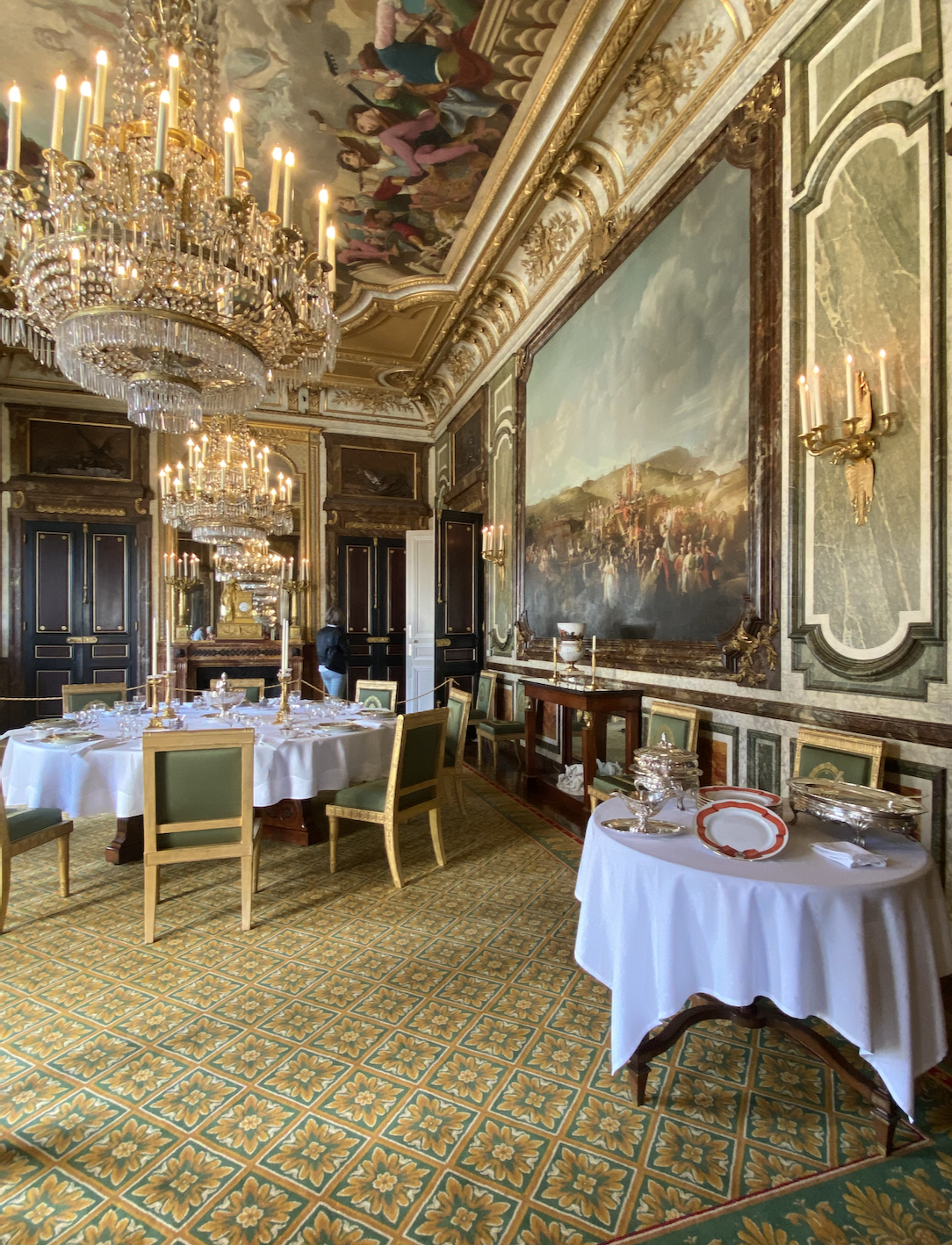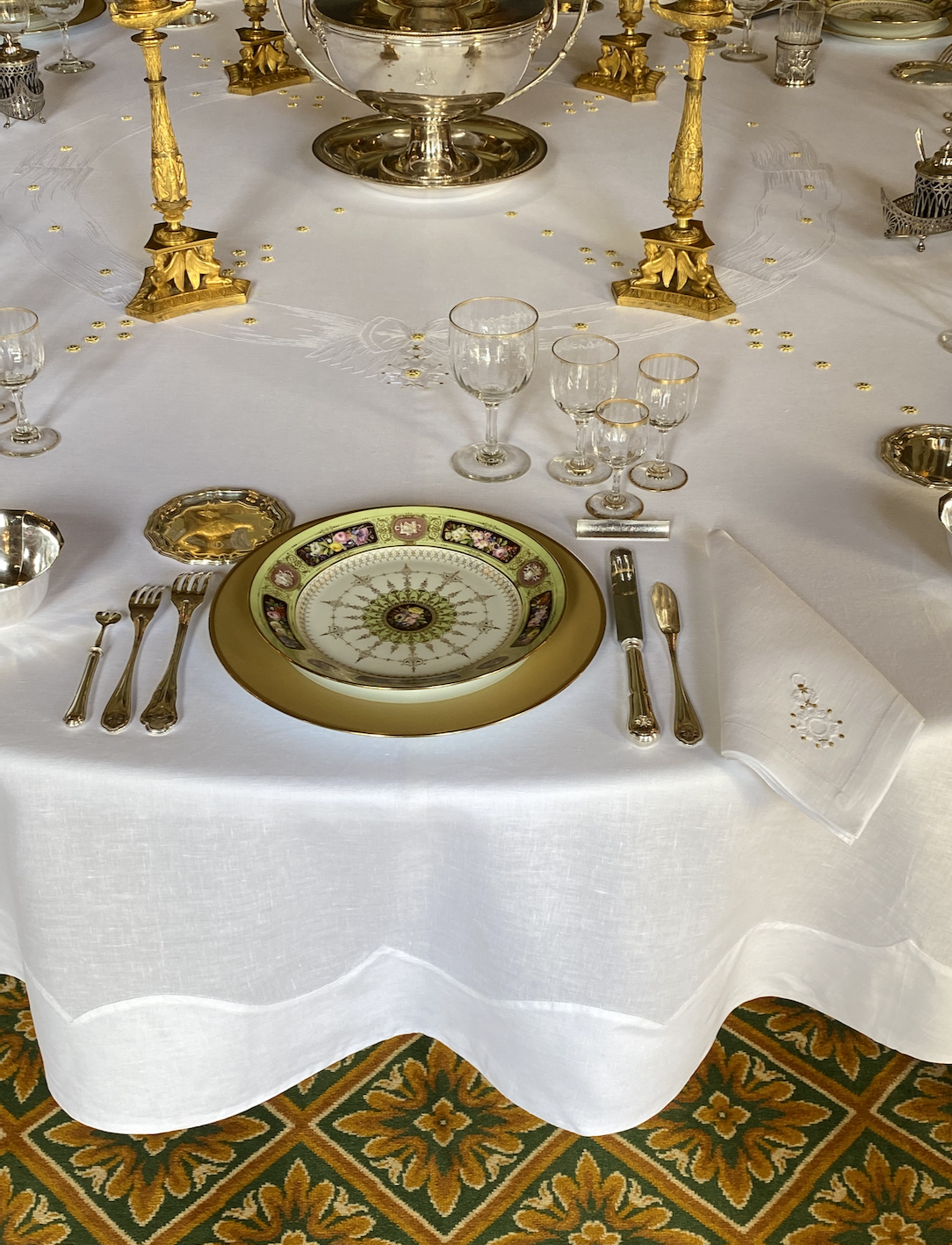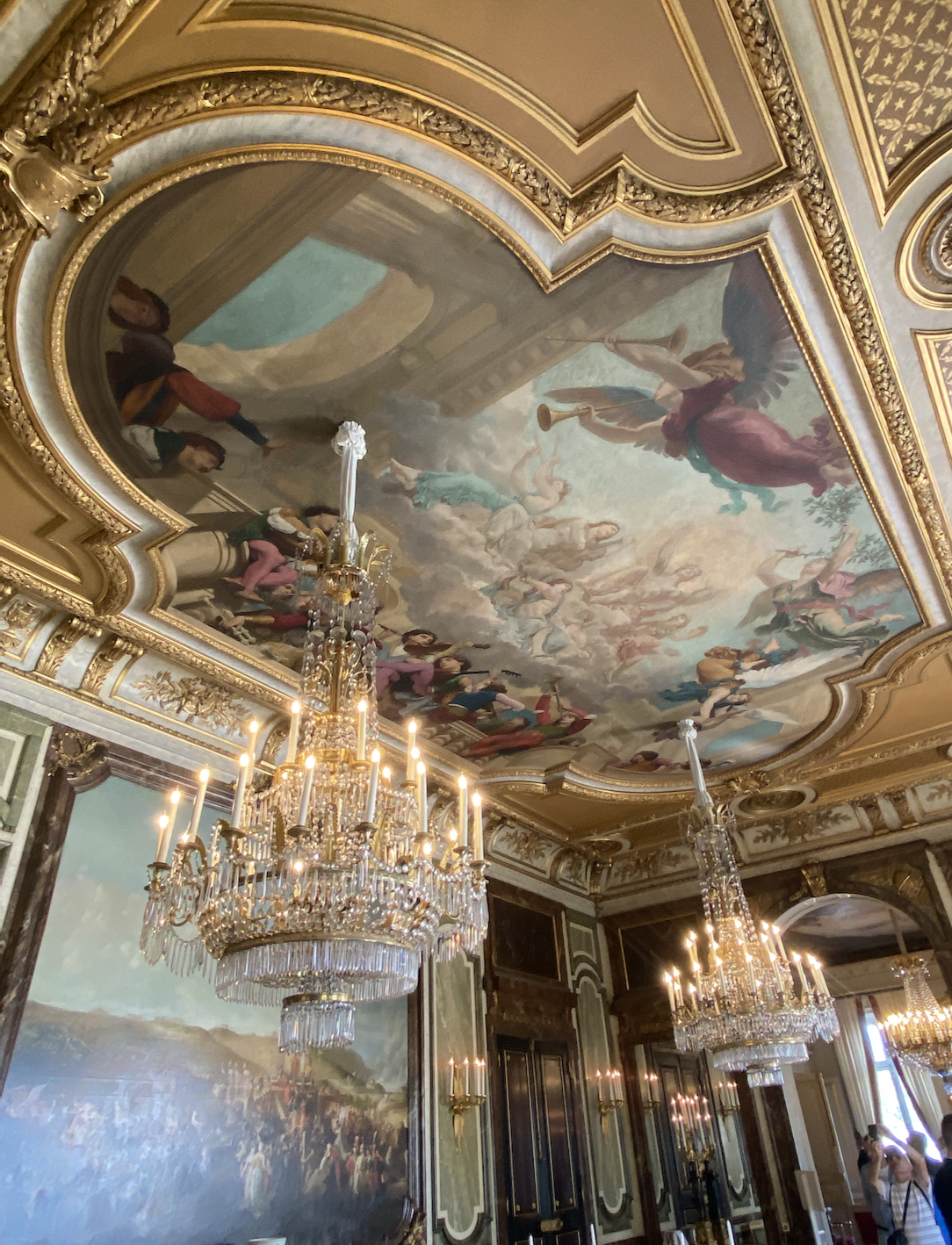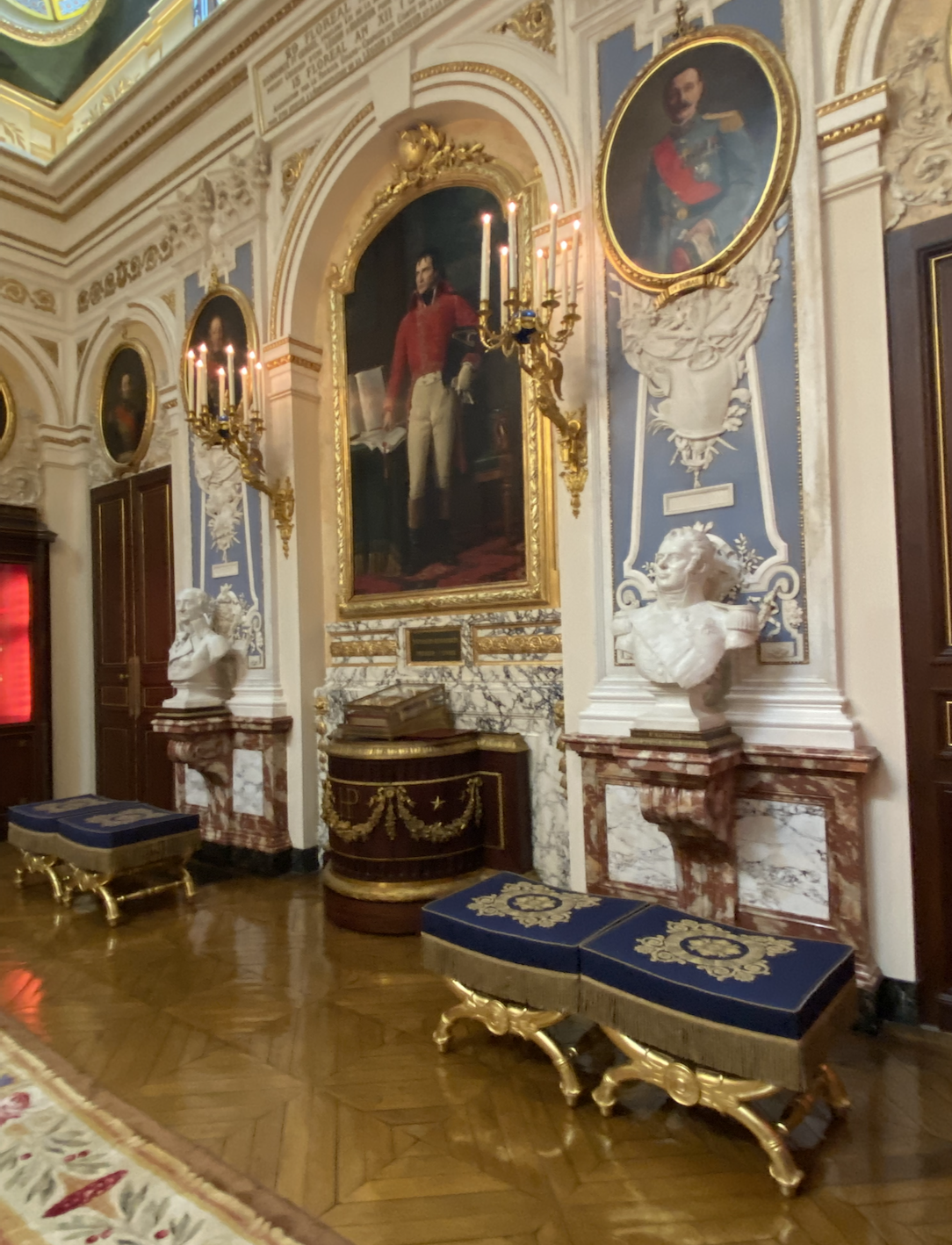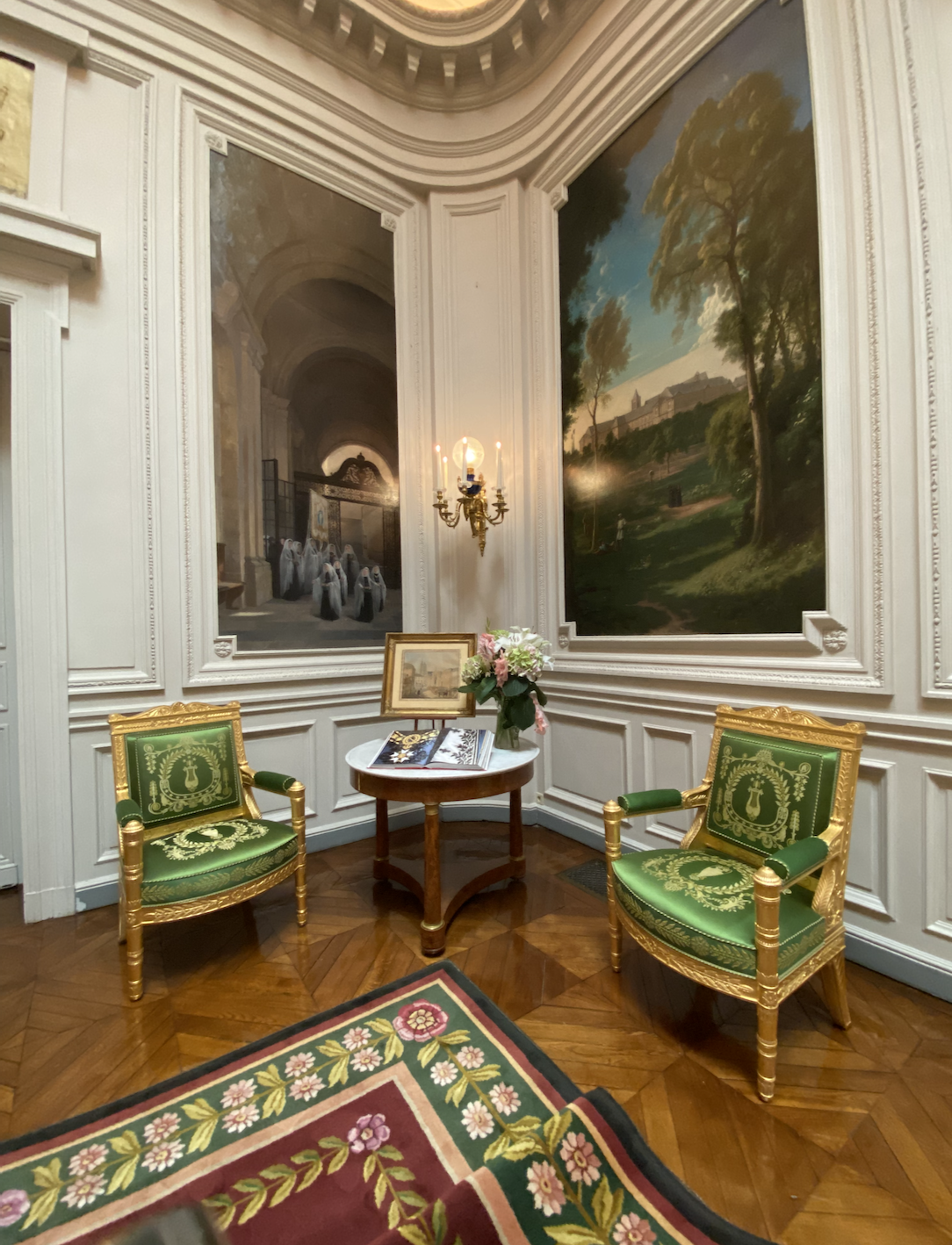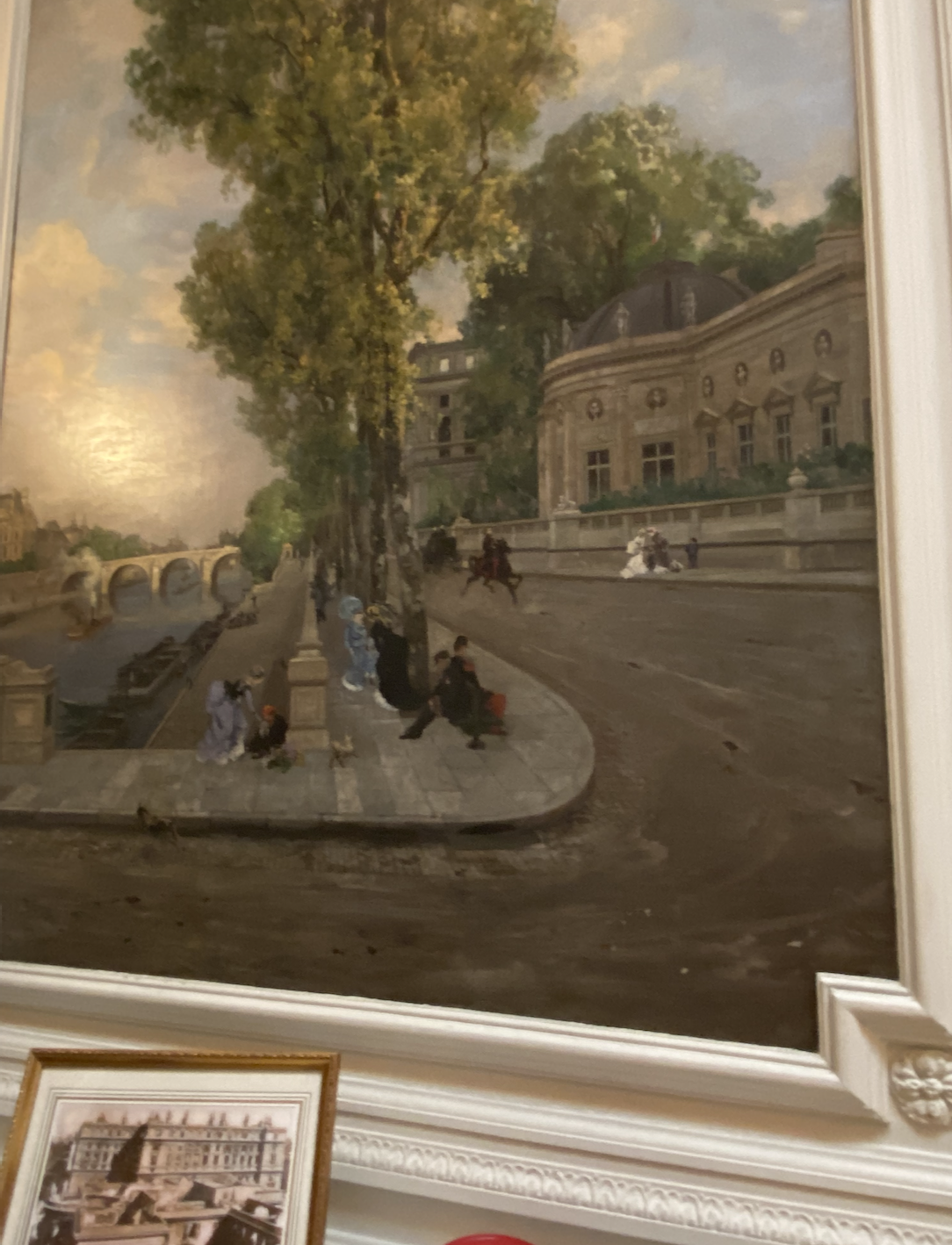Le Palais de la Légion d’Honneur, hidden behind a high gate and grand arch is one of the many buildings of Paris that are only open once a year. The third weekend in September known as the Journées du Patrimoine is when a treasure trove of locations opens their doors. This past year I finally got into the beautiful building next to the Orsay that inspired both the United States White House and Thomas Jefferson’s Monticello.
Hotel de Salm was built in 1781 for Frederick III Prince of Salm-Kyrburg. Designed by Pierre Rousseau they would later live there for a period when the owner sealed his fate during the Revolution and his life ended by the guillotine in 1794.
After the Revolution, Napoleon decided they needed something to honor the great members of France. On May 19, 1802, The Légion d’Honneur was established and the first award was given on July 15, 1804, in the chapel of Les Invalides.
On May 13, 1804, the Comte de Lacepede the first Grand Chancellor, purchased the Hotel de Salm to house the administration of the Légion d’Honneur. The rooms are lavishly decorated in the Empire fashion with furniture from palaces and chateaux that have since been destroyed. Including pieces from the Palais des Tuileries, Chateau de Saint-Cloud, and Chateau de Compiègne. The office of the Légion d’Honneur is still located here and events and receptions still occur under the dome.
In 1868 after the creation of the Rue de Solferino the building was enlarged by architect Amédée-Alphonse Lejeune. Three years later much of the interior was destroyed on May 23, 1871, as the Commune burned its way through the heart of Paris. After the Commune, the interiors were completely destroyed leaving just the outer facade standing. Immediately after the fire, architect Anastase Mortier began to draw up plans for an updated version of the interior that we see today in all its Empire glory.
The palace is the working office of the Legion d’Honneur that give out awards each year to deserving people from authors to high-ranking members of the French military and government. When you first enter the building you walk through the conference room and offices before you enter into the more lavish rooms used for events and receptions.
The Bureau du Grand Chancelier is lovely with its wood and guilt bronze perfectly framing the original painting Napoleon en costume de sacre by Robert Lefebvre. I adore the beautiful blue wallpaper with gold laurel wreaths, always a reminder of Napoleon.
The next room is the Chambre de Madame was originally used for the wife of the Grand Chancelier, today distinguished guests can stay there. Where do I check in? The ceiling was done by Faustin Besson and the gorgeous chandelier and fabric on the walls and bed is in the style of Louis XVI, always more lavish than the style of Louis XIV. The fireplace is one of the few things that survived the fire and has been lovingly restored.
The real jaw-dropper of the building is the ceiling of the Rotunda below the dome that inspired Thomas Jefferson and has many of the greats in French history. In the center is Napoleon Bonaparte, in the form of his many ages. A younger general stands before him and a much older Emperor looks on at himself in his coronation garb. Just below in the oval medallions by Achille Sirouy are four of the great rulers of France. François Ier, Louis XIV, Charlemagne, and Napoleon and each is surrounded by important members and artists of their reign. Between each of those in grisaille we can spot Jeanne d’Arc and Sainte Geneviève.
Bellow the room is filled with the furniture of Princess Élisa Bociocchi, sister of Napoleon. Surrounding the room in the alcoves are cabinets made by the Empire darlings the Jacob brothers who designed furniture for Josephine and Madame Recamier that you can also see in the Musée du Louvre.
The Salon de l’Aurore, named after the ceiling L’Aurore chassant la nuit by Joseph Ranvier. Look closely at the fireplace and the gilded clock. Jaques Louis David’s fantastic Oath of the Horatii. The monumental painting of the Louvre is brought to life here on the mantel and framed by screens once in the throne room of the Palais des Tuileries.
The Salon des Muses is dedicated to the nine muses of Zeus that are high above the ceiling. Apollo et les neuf muses by François Ehrmann. Furniture in the first empire fashion by Pierre-Antoine Bellangé from the Chateau de Compiègne
The focal point of the Salle à Manger is the large pedestal table in the center of the room. The table was once in the Salle Diane in the Chateau de Saint-Cloud and where Napoleon III had his last meal before he left Paris in 1870. The chandeliers and candelabra are from the Tuileries and the bronze clock once belonged to the King of Rome, Napoleon II.
The Salon des Grands Chanceliers is the icing on the cake. The walls include carved woodwork, gilded features, and marble and stucco carvings of the military insignias. The large painting of young Napoleon sits below the important dates in the creation of the Legion d’Honneur and don’t miss the musician balconies above.
The Salon des Maisons is filled with furniture from the Chateau de Saint-Cloud covered in regal green fabric and gilded wood. I adore the large paintings including the image of the Hotel de Salm with the burned remains of the Palais d’Orsay in the distance. To the left is my love, the Louvre.
The last room on the visit is the Vestibule topped with a painting of Général Vinoy, Grand Chancelier. High above are oval portraits of other grand chancelier officers since 1934. The statues of L’Odyssée and Pénélope by Taluet and Cavelier stand watch as you leave this wonderful slice of French history.


